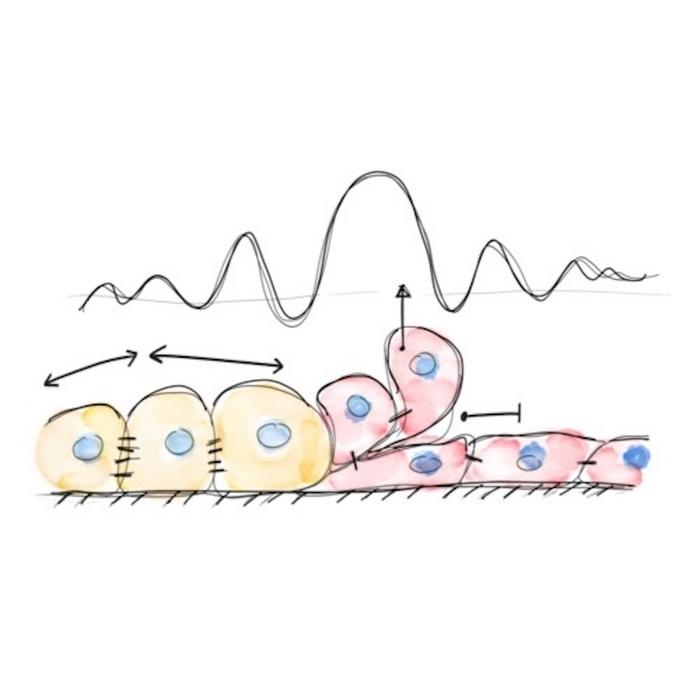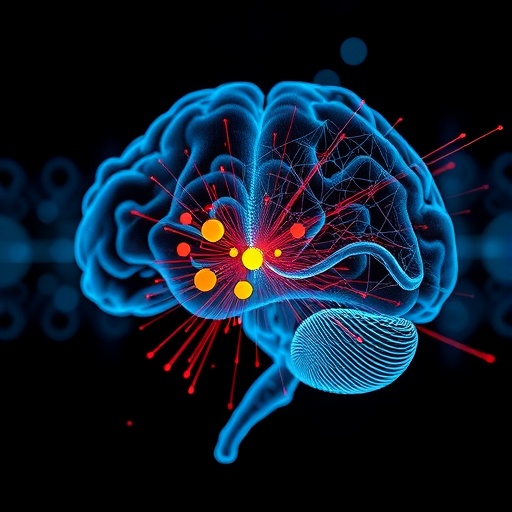
In a groundbreaking study that challenges traditional views of cell competition, researchers have unveiled a new mechanism through which mechanical forces govern the survival of cells in tissue environments. This intricate dance of cellular dynamics plays a critical role in maintaining the health and integrity of tissues, as cells continuously engage in a fierce competition for survival. The study, published in the prestigious journal Nature Materials, emphasizes the importance of these mechanical interactions in determining which cells thrive and which are eliminated.
Cell competition is a fundamental process that contributes to tissue homeostasis. It operates at both the cellular and molecular levels, where cells assess their relative fitness compared to neighboring cells. This evaluation leads to a hierarchy of “winner” cells and “loser” cells. The winners, demonstrating superior qualities or performance, are allowed to persist and flourish, while the losers are eliminated from the tissue landscape. Thus, this survival of the fittest paradigm not only helps in developing organisms but also plays a pivotal role in the ongoing repair and regeneration of tissues throughout the life of an organism.
The research team, comprising experts from key institutions, has revealed that mechanical forces significantly contribute to the competition between these cellular factions. While much research has focused on the biochemical signals mediating this process, the role of physical forces has been overlooked. The findings suggest that winner cells possess a remarkable ability to exert mechanical forces onto their surroundings, enhancing their dominance in the cellular arena. This mechanical prowess provides them with a competitive edge when engaging with loser cells, especially at the borders of distinct cellular populations.
These insights were uncovered through a collaborative effort involving biologists, physicists, and other specialists. The researchers employed a combination of in vivo tissue measurements and targeted biological interventions to dissect the mechanical properties influencing cell competition. One of the critical findings was that the interfacial regions between healthy and mutated cells serve as hotspots for heightened mechanical activity, intensifying the battle for survival. This increased mechanical fluctuation was found to be critical in facilitating the elimination of loser cells from the tissue.
A cornerstone of the study is the role of the adhesion molecule E-cadherin. This protein is essential in maintaining stable cell-cell connections and is integral to the mechanics of force transmission within cellular groups. The research deeper dive revealed how variations in E-cadherin’s adhesive capabilities impact the capacity of cells to withstand mechanical stress. Cells with elevated strength in this adhesion are better prepared to absorb and transmit mechanical forces, shielding them from competition and enhancing their survival potential amid physical challenges.
Through meticulous experiments, the research team observed that not all compressed cells were effectively eliminated, contradicting earlier dogmas surrounding mechanical cell competition. Their results imply that the competitive advantage of winner cells extends beyond mere physical displacement of loser cells. Instead, it hinges upon their ability to withstand and actively resist the forces exerted upon them, enhancing their survival amidst dynamic cellular pressure.
The revelation that mechanical fluctuations govern the fate of cell populations is both fascinating and promising. This body of work elevates our understanding of how physical factors interlace with biochemical pathways in regulating biological outcomes. It prompts a re-evaluation of cell competition theories, advocating for an integrated approach that encompasses both mechanical and chemical modalities in future research endeavors.
Furthermore, the implications of these findings reach into numerous biological phenomena. Understanding the mechanical underpinnings of cell competition can lead to novel insights in developmental biology, regenerative medicine, and oncology. The ability of cells to perceive, signal, and respond to their physical environment can elucidate mechanisms behind tissue morphogenesis, inflammation responses, and tumor dynamics.
The research community recognizes that as we delve deeper into the biomechanical aspects of cellular interactions, we must also consider how these insights can translate into clinical applications. The identification of force transmission capabilities as a key regulatory element in cell health could inform future therapies targeting tissue regeneration and cancer treatment.
As this field evolves, the potential for innovation in therapeutic interventions becomes apparent. The integration of mechanical studies alongside genetic and biochemical analyses can yield a more holistic understanding of cellular behavior in health and disease. This multi-faceted perspective will enhance our ability to manipulate cellular responses for therapeutic purposes.
In conclusion, the newly uncovered mechanical strategies in cell competition highlight the complexity of tissue homeostasis and the intricate interplay of forces at work. By broadening our focus to incorporate mechanical factors, researchers can pave the way towards a deeper understanding of cellular dynamics and develop transformative approaches to health challenges.
Subject of Research: Cells
Article Title: Force transmission is a master regulator of mechanical cell competition
News Publication Date: 14-Mar-2025
Web References: http://dx.doi.org/10.1038/s41563-025-02150-9
References: N/A
Image Credits: Lucas Anger
Keywords: cell competition, mechanical forces, tissue health, E-cadherin, mechanical transmission, biotechnology, cellular dynamics, cancer research, regenerative medicine.
Tags: cell competition mechanismscellular dynamics in tissue environmentscellular interactions and fitness assessmentcellular survival and elimination processescompetition for survival in tissuesgroundbreaking research in cell biologyimplications of cell competition in regenerationmechanical forces in cellular dynamicsNature Materials publication on cell studiessurvival of the fittest in cellstissue homeostasis and healthwinner and loser cells hierarchy




